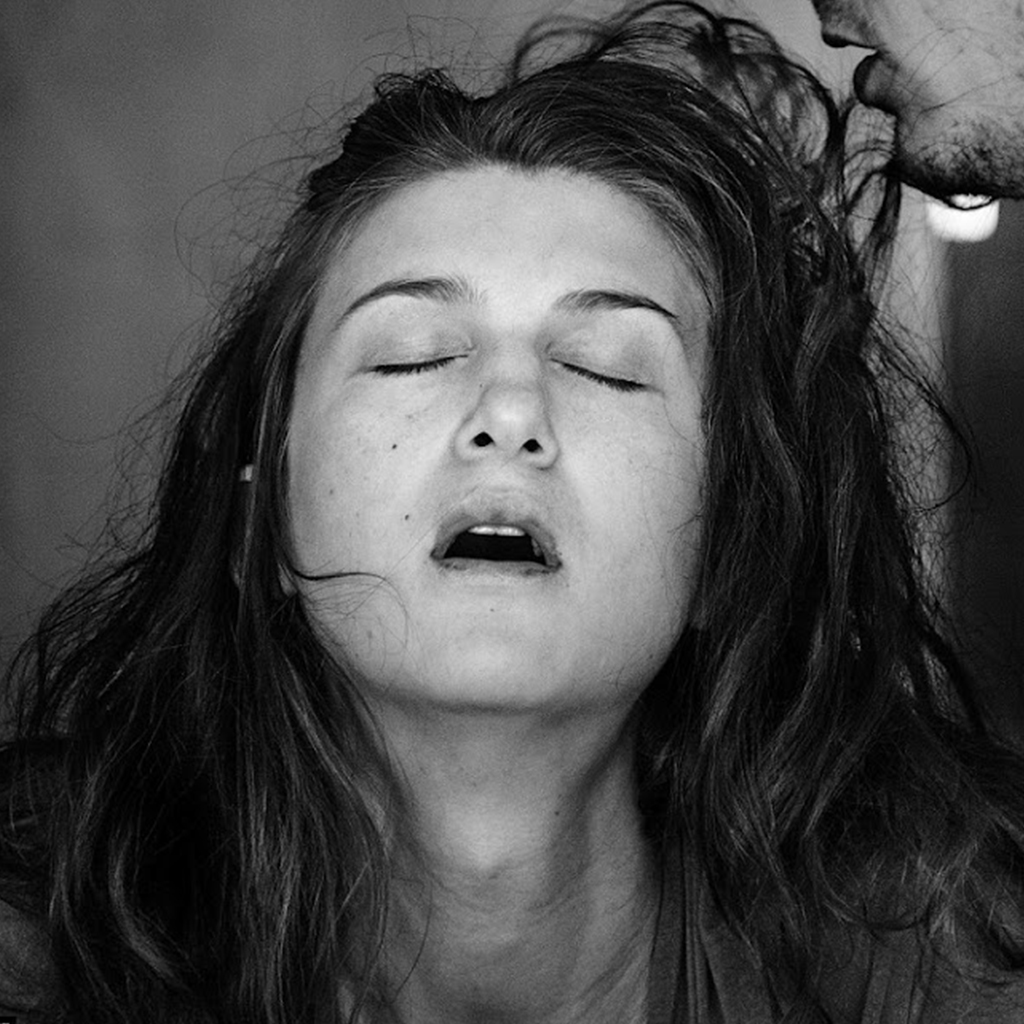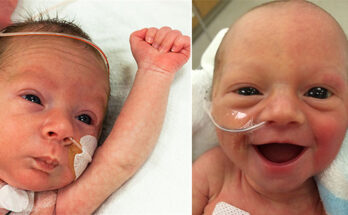It’s a moment that you probably wouldn’t want to have captured and immortalised for the world to see, but there is no denying that the faces of women in labour make for incredibly powerful images.
For her Hundred Times The Difference series of monochrome photographs, Stockholm-based Moa Karlberg attended births in Tanzania and Sweden while lingering with the women for anywhere between ten minutes and 18 hours.
Across the images, there is a range of expressions: grit and sensuality, trepidation and expectation, pain and elation. The images, however, highlight the women’s shared experience—the inward concentration and physical resolve in their final, transformational moments of becoming mothers—in their close-up perspective.
A woman grimaces in agony during childbirth in one of a series of intimate black and white shots capturing mums-to-be during labour.
Swedish photographer Moa Kalberg captured a woman in Tanzania as she closes her eyes during childbirth.
But despite the dramatically different circumstances, Karlberg said: “I was struck by the many similarities of women’s expressions. Despite the fact that most Tanzanian women do not have access to Swedish women’s medicines and nitrous gas, everyone goes through the same physical phases.”
Karlberg says that despite the huge disparities in women’s lifestyles in Sweden and Tanzania she was struck by the similarities in their facial expressions.
The photographer says that the women and their partners could have asked her to leave at any point but never did.
Karlberg shot her first childbirth as an intern at a Swedish newspaper when she found herself sharing that ‘intense and crucial moment’.
The Swedish births Karlberg witnessed, the more lucky she felt Scandinavian women especially compared to less-resourced hospitals around the world, including the clinics of Tanzania.
Karlberg said that: ‘It is when complications arise that the external disparities become more obvious’ as Swedish hospitals have everything needed to attend to a medical emergency’.
Karlberg discovered that maternity wards in Sweden didn’t mind her being there to capture the experience as long as she respected staff.
Karlberg says she doesn’t want to raise awareness by providing facts and numbers, ‘What I want is to provoke real feelings and identification’.
One mother-to-be is seen with an acupuncture needle in a pressure point between her brows to help ease the pain of childbirth.
Karlberg gained access to clinics where Tanzanian women came to have their babies through NGOs and sympathetic translators.
In many of the photos, the Tanzanian women look calmer and more relaxed than their Swedish counterparts, which Karlberg says could be about the stage of their labour – and whether the women had a room of their own.
Despite the difference in medical care, Moa was shocked to find the similarities in the facial expressions of women while giving birth.
“After witnessing several births, I realised how lucky Swedish women are to give birth in this country with access to top quality healthcare and extremely low maternal mortality rate. I find it incredibly unjust that not all women have the same opportunities. Human rights ought to include the right to give birth in a secure environment without risking one’s life.”


















